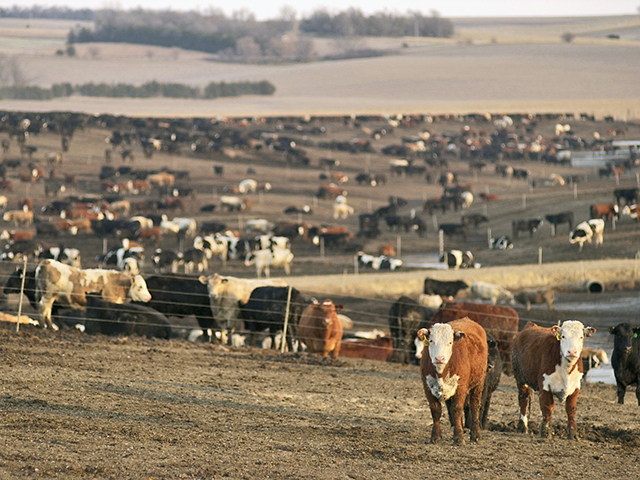Focus on Opportunity
Farm Strong - Focus on Opportunity
As we look to wrap up the fourth quarter of 2020, the only certainty that exists is that uncertainty will continue to dominate globally, domestically and most certainly throughout the U.S. cattle market. The coming months will be challenging. Not only are cattlemen balancing dynamics within the market, they are also managing a day-to-day environment far beyond the realm of anything anyone has seen or experienced before.
COW/CALF PRODUCERS AND COSTS
As producers begin to prepare for winter, it's important to think about how management decisions could change, and hopefully increase, a ranch's bottom line moving forward.
Often, cow/calf producers focus so exclusively on marketing calves that they neglect to hold other inputs accountable for the operation's overall expense and often overlook other revenue streams. Being in the black isn't just about getting a good market price, it's about spending wisely so money invested is money returned.
While there's no denying it is vital to market calves to their fullest potential, it's equally important to manage input costs such as hay, winter grazing and mineral supplements. As drought became more widespread, feed expenses were already exponentially higher in some regions at press time. These prices could continue to climb as winter progresses. Anything an operator can do to avoid carrying animals that won't provide an economic return through the winter is money in his pocket.
One of the most overlooked and underutilized markets is that of cull cows. Culls attribute anywhere from 10 to 20% of a cow/calf operation's total annual revenue. That's why it's as important to have a marketing plan for cull cows as it is to have a marketing plan for calves.
P[L1] D[0x0] M[300x250] OOP[F] ADUNIT[] T[]
So, as we strap in for 2021, watch feed costs and prepare for them to get higher. Be willing to adapt your usual management program. Don't weigh the operation down with anything that isn't paying its way. And, lastly, look for ways to diversify income streams and adapt as the new market starts to step up and show us what it's made of.
STOCKERS AND BACKGROUNDERS
With the number of available wheat pastures limited this year accompanied by all-time high feedlot placements early in the fourth quarter, backgrounders have a tight balancing act heading into 2021. That doesn't mean there aren't opportunities. With feed costs being one of the biggest unknown factors going into the new year, if backgrounders have stockpiled feed or forages, there are profits to be made by carrying calves over into 2021, especially when looking at how the futures complex is trending.
Regardless of where you look -- north, south, east or west -- yearlings performed exceptionally well through online and sale barn auctions across the country in 2020. Backgrounding calves can be a good strategy to offset some of the risk feedlots are trying to avoid right now. As such, this sector could see substantive dividends as the number of available yearlings continues to grow ever so thin.
PLAN FOR HIGHER FEED COSTS
At this point, the cattle-feeding industry sits with more unanswered questions than possibly ever before. Establishing a more positive marketplace for beef in 2021 means feedlots have to improve front-end currentness, scale down carcass weights, grow beef demand domestically and continue to be robust exporters and competitors internationally. There's no reason feeders can't regain some leverage in the coming months, turning 2021 into a reasonably positive year for most.
With vast placements late in summer, feedlots need to be prepared to strategically market cattle when they become finished in early-spring 2021. Ample numbers of market-ready cattle will favor the packers' position.
Cattle feeders also need to closely track corn prices. While 2020 provided the blessing of manageable corn prices, that may not be the case in 2021. Feedlots need to be prepared for higher prices, which includes using tools like forward-pricing and considering alternative rations.
INDUSTRY OUTLOOK MIXED
The cattle market endured a lot of incredibly tough moments last year. Despite the heartache and hardship, it seems nothing short of miraculous today to be able to say that U.S. cattlemen are ready to take on whatever comes next. The resiliency of the cattle industry can be an example to the rest of the country. While 2020 has been tough, it taught us to sharpen our pencils and see our operations with more clarity. What's key to remember is every challenge has an opportunity attached to it. We can find that positive side of things if we work together as an industry.
> Read ShayLe's blog at https://www.dtnpf.com/…
> You may email ShayLe at shayle.stewart@dtn.com, or call 406-425-8520.
[PF_111520]
(c) Copyright 2020 DTN, LLC. All rights reserved.




